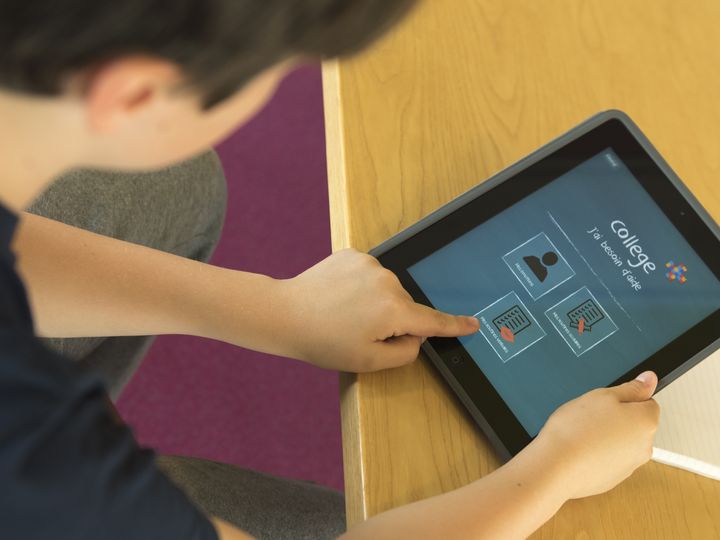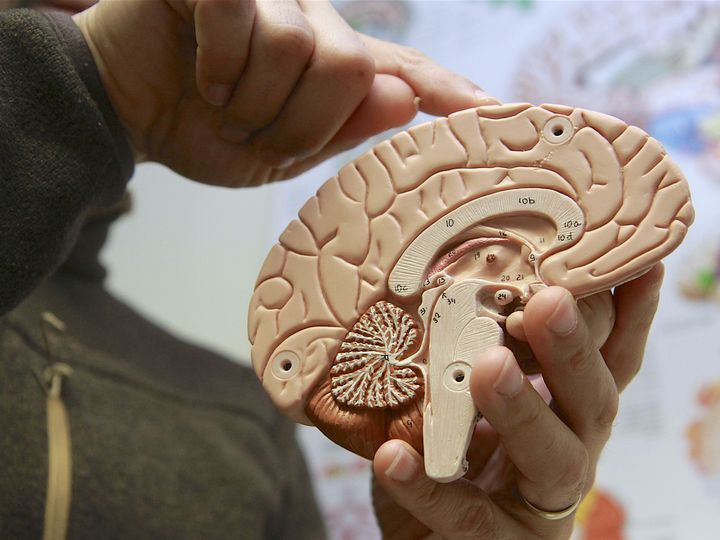Poster by Cécile Mazon, PhD student in team Phoenix
Efficacy and usability of technological interventions for children and adolescents with autism spectrum disorders: a systematic review of the literature.
Autism Spectrum Disorders (ASD) are neurodevelopmental disorders characterised by social communication difficulties, limited interests and repetitive behaviours. ASD affects daily life in many different ways and limits participation, such as access to mainstream schooling. To address this problem, a growing number of studies have explored the possibilities offered by technological interventions in supporting children with ASD in their daily lives. These studies fall into two categories, according to their research objectives, with: 1) studies related to Human-Computer interactions, which focus on evaluating the usability of the technology, and 2) studies related to clinical factors, which focus on evaluating the therapeutic efficacy of the tools.
The objectives of this systematic literature review are to:
1) examine the study protocol in relation to evidence-based practice standards;
2) evaluate the quality of measurements used in the studies; and
3) compare the methodology between the two types of study, those on usability vs. those on therapeutic efficacy.
Of the 685 research results, 31 studies were selected for the review, including 22 on therapeutic efficacy, 6 on usability, and 3 on both of these factors.
Robots and computers are the technology that was analysed the most, but computers proved to be more effective than robots. Interventions mainly targeted socio-emotional skills, and the studies have shown encouraging results.
Overall, few studies meet the minimum standards in terms of methodology (robust study protocol and reliable measurements). However, studies into therapeutic efficacy have provided stronger evidence than the studies into usability, as they better respected methodological standards. An analysis of the studies also showed that, regardless of the research objective, the results achieved were influenced by the methodology: 1) the more robust the study protocol, the less consistent and statistically significant the results were, and 2) the more reliable the measurements, the smaller the effect sizes were. Stricter studies are therefore needed for technological interventions to be considered as effective practices for children with ASD.
Finally, the studies that analysed both usability and therapeutic efficacy present a promising new approach that combines expertise from the fields of Human-Computer interactions and clinical research.
These factors are of equal importance in evaluating technological interventions, given that clinical benefits require that the technological tool be usable.
Poster by Aurélien Appriou, PhD student in team Potioc
Optimising human digital learning by decoding brain activity in real time
Studying human learning is vital: how do humans learn and what are their motivations for continuing to accumulate knowledge? Each human being is constantly learning to adapt to their environment and current generations must now learn to use fast-changing digital technology. One of the major challenges of the 21stcentury is therefore to understand the cognitive and motivational processes involved in digital learning. Some technology requires a great deal of cognitive resources from users. This can force them to expend an enormous amount of effort during interaction and overload them cognitively, making learning inefficient. The amount of work done by the brain of the person using the technology is called cognitive workload; it is one of the many cognitive states involved in learning. Another cognitive state is curiosity: technology that stimulates curiosity favours efficient learning. The cognitive states involved in learning originate in the brain. We can study some of them by measuring brain activity during human-technology interactions. Electroencephalography (EEG) is used, which consists of placing a set of electrodes on the user's scalp and collecting electrical signals from the brain.
Our work therefore aims to decode cognitive states such as workload from EEG signals. This allows us to develop technology that supports efficient learning by ensuring that user workload levels are neither too high (overload) nor too low (boredom).
To do this, we first select numerical tasks with different levels of complexity, i.e. distinct variations in workload. We then measure the EEG signals induced while these tasks are performed. Finally, we apply machine learning algorithms to identify the EEG models associated with different workload levels. So far, by using tools such as Deep Learning, we have been able to successfully distinguish between low- and high-workload levels in EEG signals. This opens up promising prospects for the future of digital learning.

